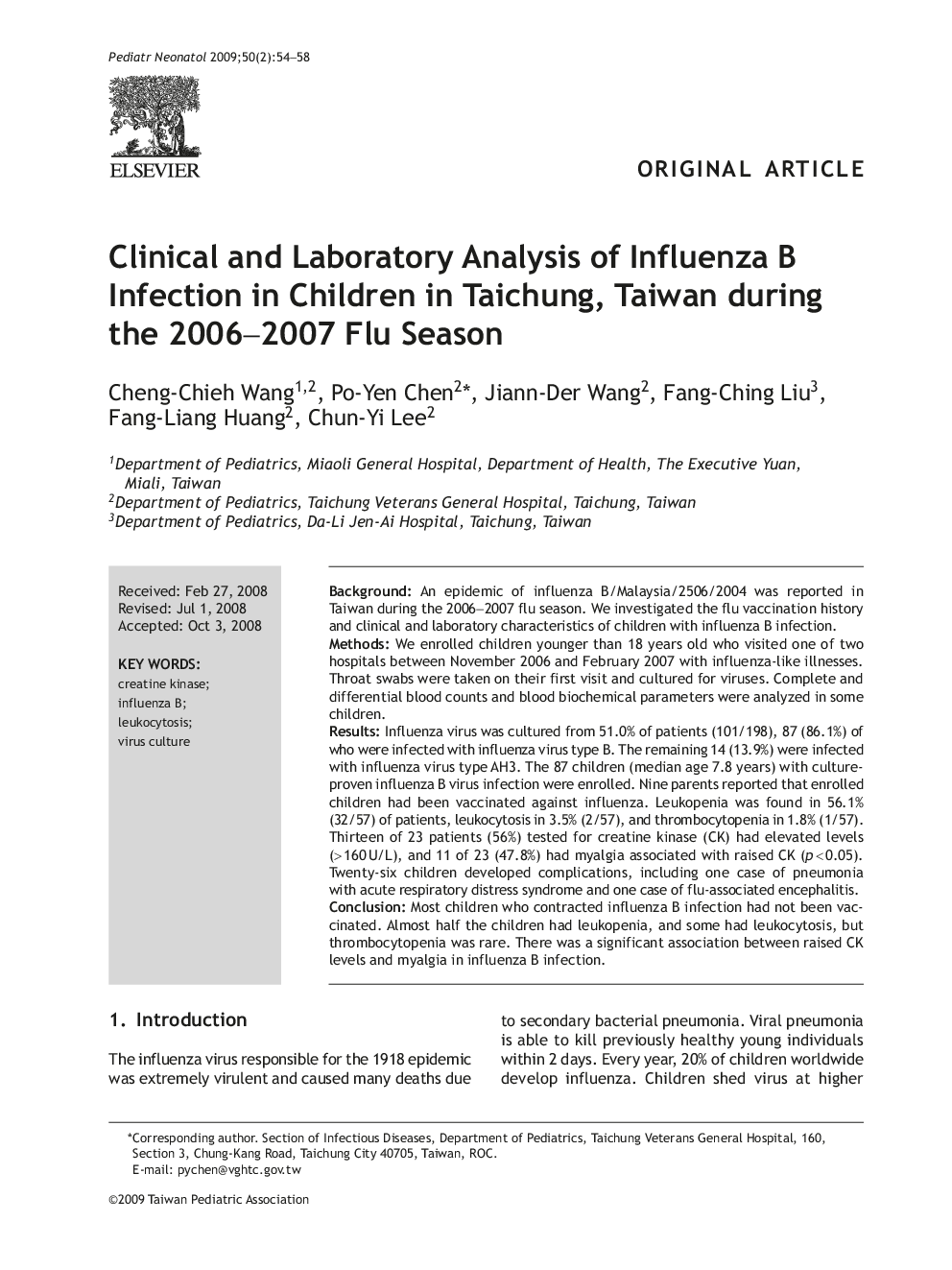| Article ID | Journal | Published Year | Pages | File Type |
|---|---|---|---|---|
| 4175606 | Pediatrics & Neonatology | 2009 | 5 Pages |
BackgroundAn epidemic of influenza B/Malaysia/2506/2004 was reported in Taiwan during the 2006-2007 flu season. We investigated the flu vaccination history and clinical and laboratory characteristics of children with influenza B infection.MethodsWe enrolled children younger than 18 years old who visited one of two hospitals between November 2006 and February 2007 with influenza-like illnesses. Throat swabs were taken on their first visit and cultured for viruses. Complete and differential blood counts and blood biochemical parameters were analyzed in some children.ResultsInfluenza virus was cultured from 51.0% of patients (101/198), 87 (86.1%) of who were infected with influenza virus type B. The remaining 14 (13.9%) were infected with influenza virus type AH3. The 87 children (median age 7.8 years) with culture- proven influenza B virus infection were enrolled. Nine parents reported that enrolled children had been vaccinated against influenza. Leukopenia was found in 56.1% (32/57) of patients, leukocytosis in 3.5% (2/57), and thrombocytopenia in 1.8% (1/57). Thirteen of 23 patients (56%) tested for creatine kinase (CK) had elevated levels (> 160 U/L), and 11 of 23 (47.8%) had myalgia associated with raised CK (p < 0.05). Twenty-six children developed complications, including one case of pneumonia with acute respiratory distress syndrome and one case of flu-associated encephalitis.ConclusionMost children who contracted influenza B infection had not been vaccinated. Almost half the children had leukopenia, and some had leukocytosis, but thrombocytopenia was rare. There was a significant association between raised CK levels and myalgia in influenza B infection.
